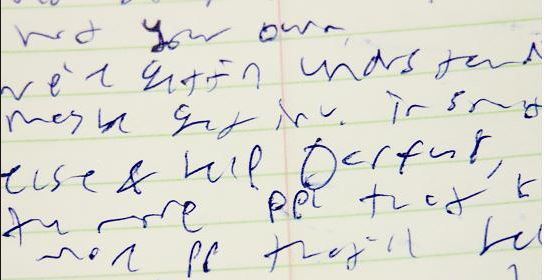In 2011, only 27 percent of the nation’s high school seniors were deemed to be proficient in writing. According to information recently revealed by The Washington Post’s Jay Mathews, those numbers will likely not be improving any time soon.
In dissecting an Education Trust report on the state of America’s classrooms, Mathews highlighted some “depressing numbers” suggesting that poor student writing might be the product of poor writing instruction:
“18 percent of the assignments required no writing at all. Sixty percent demanded just some note-taking, short responses or a sentence or two. Fourteen percent required students to write a single paragraph — whoopee. Only 9 percent went beyond that.”
Mathews goes on to assert that today’s Common Core writing standards bore students and discourage writing, and insists we must choose another way:
“Paula Stacey, who has taught every level of writing instruction, has suggested shelving ‘the narrow models, the graphic organizers, the formats and steps’ and just do this: ‘Ask students questions, read their answers, and ask more questions.’
The professional writers I know learned the joy and power of words not by doing their grammar homework but by writing diaries, poems, songs, letters to friends, long essays or working for a student newspaper. They benefitted from heavy editing, an experience schools rarely provide.”
This advice coincides with that given at a State Teachers’ Association meeting in 1886 by C.B. Bradley, an English professor at the University of California. According to Bradley, writing instruction should include the following three elements:
1. Nourishment – Good writing, Bradley notes, is “generously supported and fed” by food for thought. Unless the student continually feeds his mind by reading and ingesting the ideas of others, the well will be dry and the composition uninspiring.
2. Continuous Exercise – “It is not enough,” writes Bradley, “that the powers be supported and fed; they must be vigorously exercised; they must be tasked, not indeed to exhaustion, but quite up to the limit of their buoyant and healthy activity.” In contrast to math exercises, Bradley notes that writing exercises are too few and far between. Regular writing practice enables students to make a habit of producing and connecting thoughts.
3. Real-World Examples – According to Bradley, it is not enough for students to simply read and practice good writing methods. They must also hear proper English spoken in the classroom and in daily life in order to incorporate these elements into their own writing.
Judging by Jay Mathews’ assessment of writing instruction in American classrooms, would today’s education system be wise to reevaluate its methods and adopt Bradley’s writing recommendations?
















Leave a Comment
Your email address will not be published. Required fields are marked with *